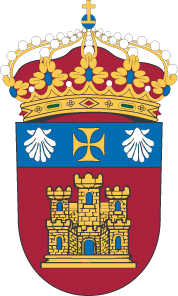Mostrar el registro sencillo del ítem
| dc.contributor.author | Louis, Elan D. | |
| dc.contributor.author | Cubo Delgado, Esther | |
| dc.contributor.author | Trejo Gabriel y Galán, José Mª | |
| dc.contributor.author | Ausín Villaverde, Vanesa | |
| dc.contributor.author | Delgado Benito, Vanesa | |
| dc.contributor.author | Sáez Velasco, Sara | |
| dc.contributor.author | Macarrón Vicente, Jesus | |
| dc.contributor.author | Cordero Guevara, José | |
| dc.contributor.author | Benito-León, Julián | |
| dc.date.accessioned | 2023-12-18T11:46:59Z | |
| dc.date.available | 2023-12-18T11:46:59Z | |
| dc.date.issued | 2011-10 | |
| dc.identifier.issn | 0251-5350 | |
| dc.identifier.uri | http://hdl.handle.net/10259/8217 | |
| dc.description.abstract | Background: Mild hand tremor occurs in most normal adults. There are no surveys of the prevalence or clinical correlates of such tremor among children. Methods: A cross-sectional study of tics, tremor and other neurological disorders was conducted in Spanish children; thus, 819 schoolchildren in Burgos, Spain, drew Archimedes spirals with each hand. Tremor in spirals was rated (0–2) by a blinded neurologist and an overall tremor rating (0–4) was assigned. Results: The mean age was 10.9 ± 3.1 years. A tremor rating of 1 (mild tremor) was present in either hand in 424 (51.7%) children, and in both hands in 88 (10.7%) children. Higher tremor ratings were very uncommon. The overall tremor rating was higher in boys than girls (1.31 ± 0.41 vs. 1.22 ± 0.34, p = 0.002) and correlated weakly yet significantly with age (ρ = 0.09, p = 0.01). Within subjects, the left hand spiral rating was greater than the right (p < 0.001). Conclusions: In this cross-sectional study of 819 Spanish schoolchildren, mild tremor was commonly observed. As in adults, males had more tremor than females, tremor scores increased with age, and tremor scores were higher in the left than right arm, demonstrating that these clinical correlations seem to be more broadly generalizable to children. The functional significance of tremor in children, particularly as it relates to handwriting proficiency, deserves additional scrutiny. | en |
| dc.description.sponsorship | This research was supported by National Institutes of Health Grants R01 NS39422 and Sanidad Castilla y León (SACYL), Biomedicine Project GRS 157-A, Health Research Grant PI 070846, and European General Development Cofunding. | en |
| dc.format.mimetype | application/vnd.openxmlformats-officedocument.wordprocessingml.document | |
| dc.language.iso | eng | es |
| dc.publisher | Karger Publishers | en |
| dc.relation.ispartof | Neuroepidemiology. 2011, V. 37, n. 2, p. 90–95 | en |
| dc.subject | Tremor, children | en |
| dc.subject | Tremor, gender and age | en |
| dc.subject | Hand tremor | en |
| dc.subject | Essential tremor | en |
| dc.subject | Schoolchildren, cross-sectional study | en |
| dc.subject.other | Sistema nervioso-Enfermedades | es |
| dc.subject.other | Nervous system-Diseases | en |
| dc.subject.other | Enseñanza primaria | es |
| dc.subject.other | Education, Primary | en |
| dc.title | Tremor in School-Aged Children: A Cross-Sectional Study of Tremor in 819 Boys and Girls in Burgos, Spain | en |
| dc.type | info:eu-repo/semantics/article | es |
| dc.rights.accessRights | info:eu-repo/semantics/openAccess | es |
| dc.relation.publisherversion | https://doi.org/10.1159/000330352 | es |
| dc.identifier.doi | 10.1159/000330352 | |
| dc.relation.projectID | info:eu-repo/grantAgreement/SACYL//GRS 157-A/ | es |
| dc.identifier.essn | 1423-0208 | |
| dc.journal.title | Neuroepidemiology | en |
| dc.volume.number | 37 | es |
| dc.issue.number | 2 | es |
| dc.page.initial | 90 | es |
| dc.page.final | 95 | es |
| dc.type.hasVersion | info:eu-repo/semantics/acceptedVersion | es |




